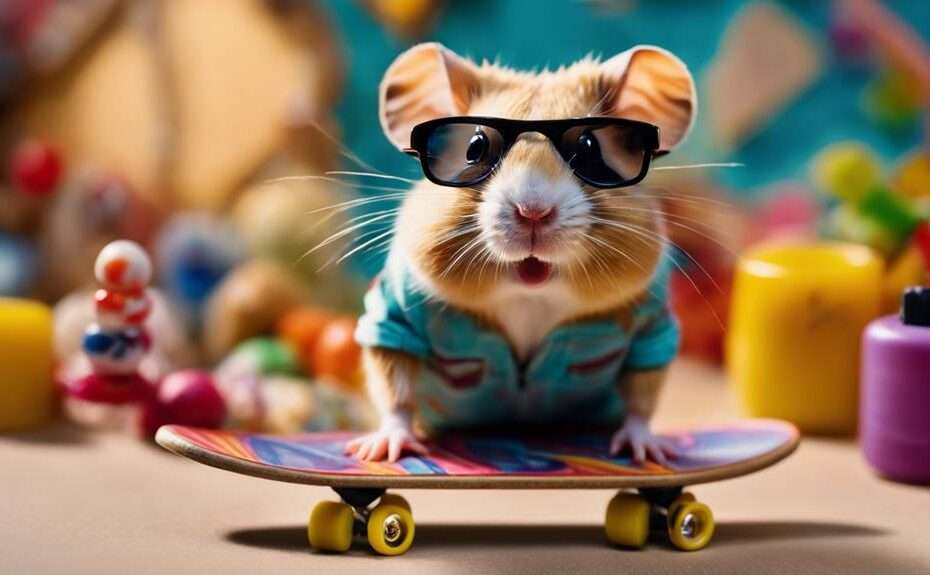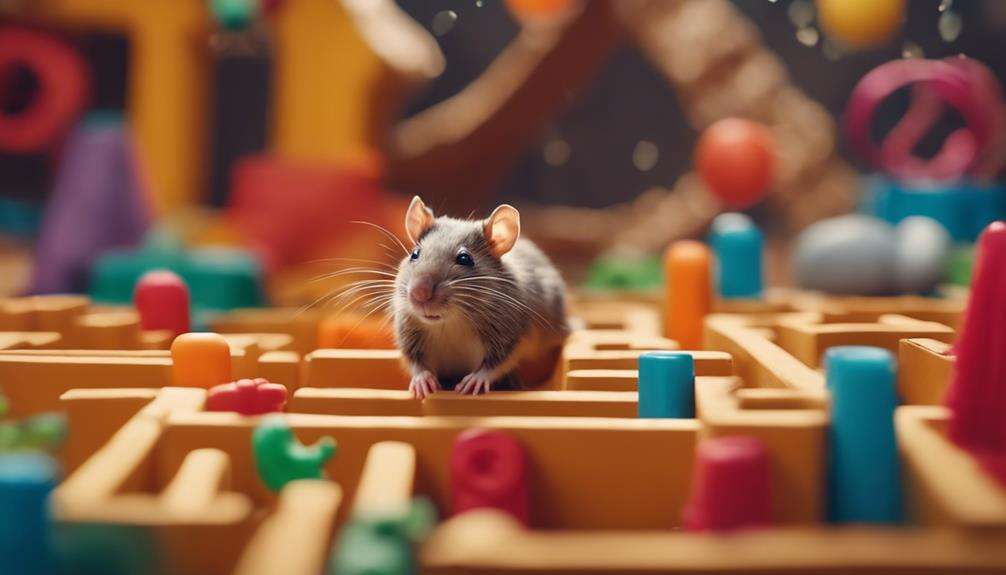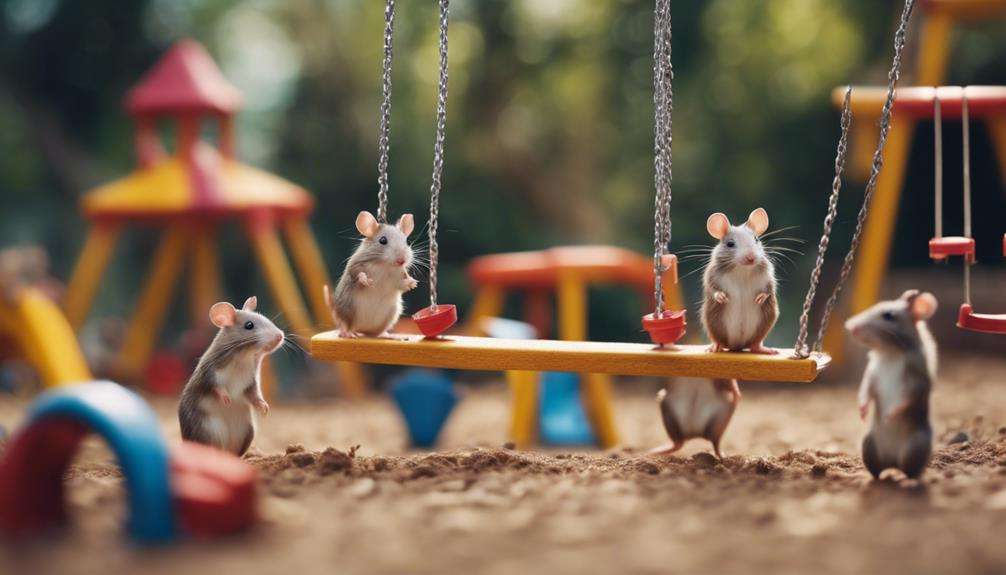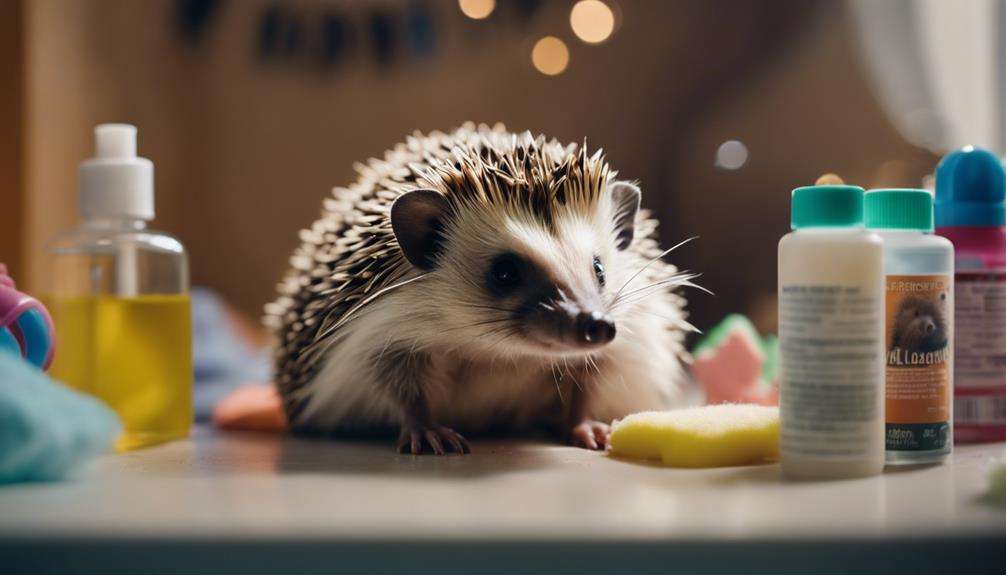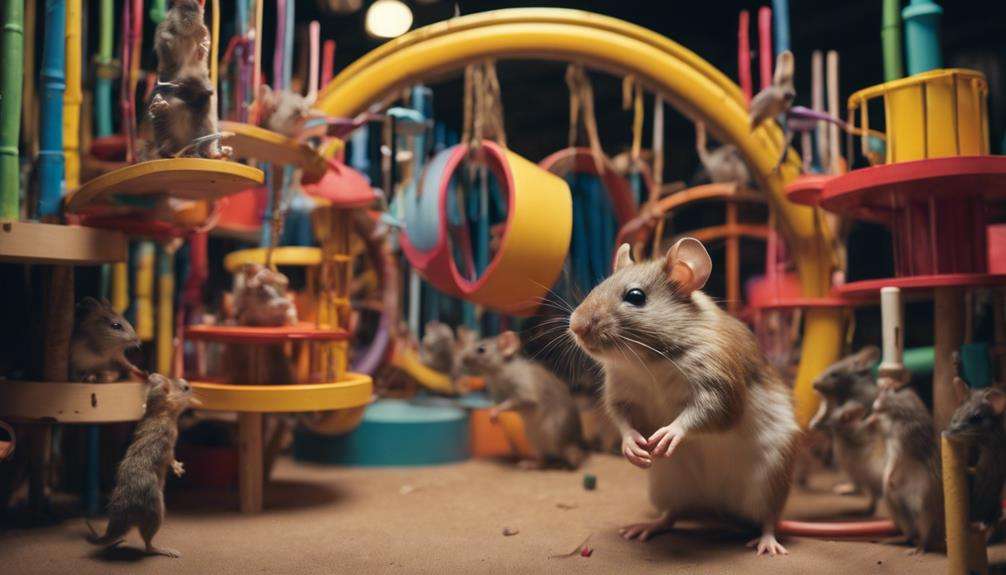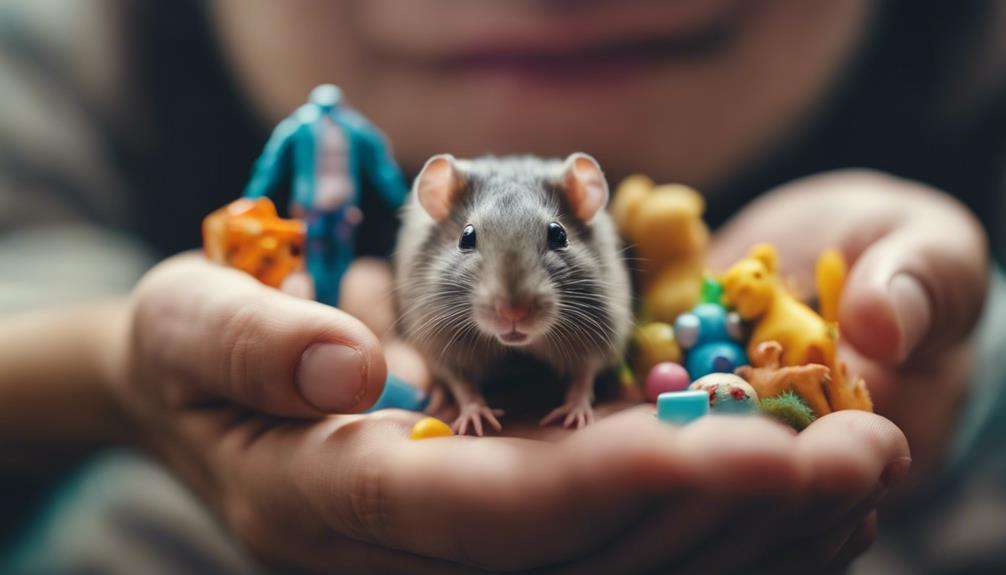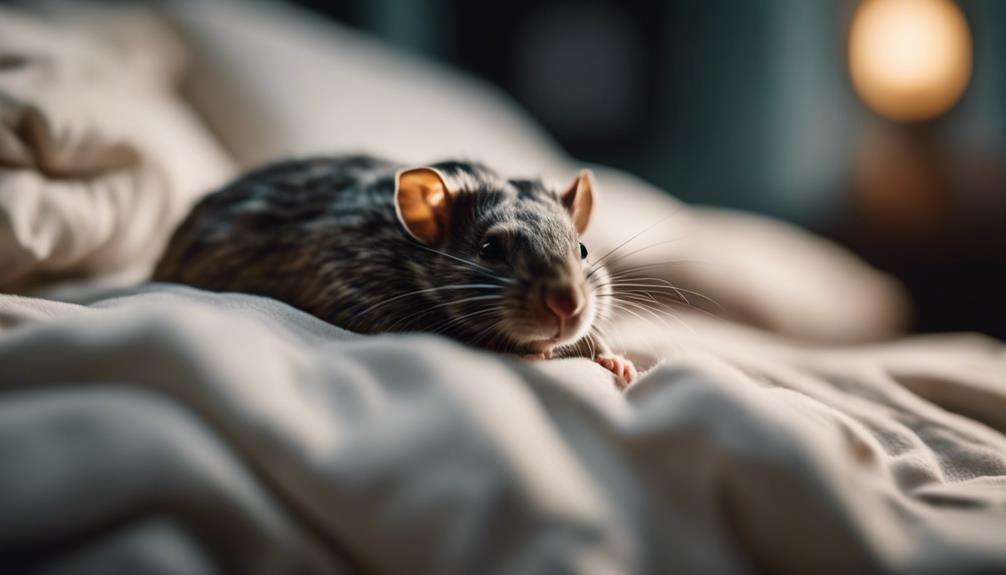When it comes to understanding quirky rodents, it's like peeling back layers of an onion, revealing intricate details of their behavior. From their unique communication methods to their problem-solving skills, these creatures never cease to surprise.
Exploring the depths of their social structures and coping mechanisms can provide valuable insights into managing their well-being effectively.
Stay tuned to unravel the mysteries behind quirky rodents and discover how to foster a harmonious relationship with these fascinating creatures.
Key Takeaways
- Rodents display diverse behaviors to establish hierarchies and strengthen social bonds.
- Communication through vocalizations and scent marking is vital for understanding their needs.
- Enrichment activities and social play dynamics support mental well-being and group cohesion.
- Meeting dietary needs, sleep patterns, and providing enrichment are crucial for quirky rodents' overall health.
Behavior Patterns in Quirky Rodents
Quirky rodents, particularly rats, exhibit a range of unique behaviors that serve as vital indicators of their emotional states and social interactions. When it comes to non-aggressive interaction, behaviors like pooling and nibbling are common among rats, allowing them to explore their environment and communicate without aggression. These interactions play a crucial role in establishing social hierarchies and maintaining group cohesion.
Chew toys also play a significant role in the behavioral patterns of rats. Providing rats with appropriate chew toys not only helps in keeping their constantly growing incisors in check but also serves as a form of enrichment that can reduce stress and prevent unwanted behaviors like excessive chewing on cage bars or self-injury. Monitoring stress indicators in rats, such as porphyrin secretion or abnormal behaviors, is essential for maintaining their well-being in captivity.
Communication Methods Among Quirky Rodents
Rodents employ a diverse array of communication methods, including vocalizations and scent marking. Ultrasonic vocalizations are utilized by rodents to convey information that's beyond the human hearing range.
Additionally, scent marking is crucial for indicating territory, reproductive status, and social hierarchy among these quirky creatures.
Rodent Vocalizations
Communication among rodents is facilitated through a diverse range of vocalizations, including squeaks, chirps, chatters, and ultrasonic calls. Rodents use these vocalizations for various purposes:
- Pup Isolation Calls: High-pitched vocalizations emitted by rat pups to attract maternal attention and care.
- Alarm Calls: Indicate potential danger in the environment and serve as a warning signal to other rodents.
- Dominance Establishment: Vocalizations are used to establish dominance within the group.
- Emotional Expression: Rodents convey emotions like fear, pleasure, aggression, and seek companionship through vocalizations.
Understanding these vocalizations allows for better communication with pet rodents and aids in interpreting their behavior accurately. By listening closely to their vocal cues, you can better understand their needs and emotions.
Scent Marking Behavior
Utilizing their specialized scent glands and excretions, rodents employ scent marking as a sophisticated form of chemical communication within their social structures. This intricate method allows rodents to convey essential information such as territory delineation, individual identity, reproductive status, and social hierarchy within their groups.
Scent marking, through urine, feces, and specialized scent glands, is crucial for rodents to establish and maintain their place in the social order. For the first time, newly introduced rodents may find scent marking the least stressful way to communicate and integrate into established groups. By interpreting these scent marks, rodents can gather valuable information about their environment, potential mates, and competitors.
Understanding the intricate world of scent marking is like opening a 'gzip' file full of essential social cues among quirky rodents.
Playful Interactions in Quirky Rodents

Quirky rodents engage in diverse play behaviors, including chasing, wrestling, and play fighting. These playful interactions serve to strengthen social bonds, facilitate communication, and provide essential physical exercise.
Rodent Play Behavior
In the realm of rodent behavior, understanding the nuances of play behavior is essential for optimizing their physical and mental well-being. Rodent play behavior includes activities like wrestling, chasing, and roughhousing, which are crucial for their physical and mental stimulation.
Playful interactions among rodents aid in developing social skills, establishing hierarchies, and maintaining a healthy bond within the group. This behavior can vary based on species, age, and individual personalities, highlighting their unique quirks and preferences.
Providing appropriate toys, tunnels, and climbing structures can encourage and enhance these playful interactions among quirky rodents. Understanding and fostering play behavior in quirky rodents is vital for their overall well-being, enrichment, and happiness in captivity.
Social Play Dynamics
Have social play dynamics been observed to influence the establishment of hierarchies and bonds within groups of rodents?
Quirky rodents engage in playful bonding through social play dynamics, which involve rough interactions such as wrestling, squeaking, and chasing. These playful behaviors play a crucial role in shaping social hierarchies and strengthening relationships within rodent groups.
Activities like wrestling and pushing not only provide physical exercise but also contribute to the mental well-being of quirky rodents by promoting social interaction. Unlike actual fights, mock fighting is a common form of play among these rodents, serving as a means of communication to maintain social harmony.
Understanding and encouraging these social play dynamics are essential for pet owners to create enriching environments that support healthy relationships and overall well-being among their furry companions.
Quirky Rodents' Problem-Solving Skills
How do rodents demonstrate their problem-solving skills in tasks such as maze navigation and object manipulation? Rodents exhibit remarkable problem-solving abilities that shed light on their cognitive processes and adaptive behaviors. Here are some key points to consider:
- Problem-solving strategies: Rodents employ various strategies to tackle challenges, such as trial and error, spatial reasoning, and memory retrieval.
- Innovative solutions: In complex tasks, rodents showcase creativity by devising unconventional solutions to reach their goals efficiently.
- Cognitive flexibility: Rodents display the ability to adapt their problem-solving approaches based on feedback and environmental cues, showcasing their mental agility.
- Environmental influences: Factors like enriched environments, social interactions, and past experiences significantly impact rodents' problem-solving skills, highlighting the importance of environmental stimulation in cognitive development.
Coping Mechanisms of Quirky Rodents
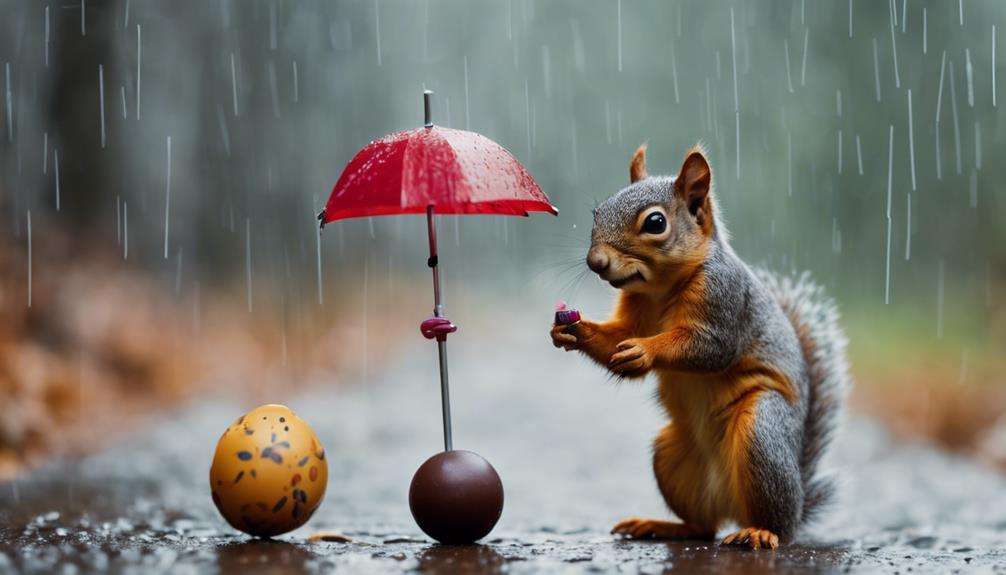
When observing quirky rodents, their unique coping mechanisms in response to stress or environmental changes become evident. These rodents exhibit various behaviors to manage stress, including engaging in elaborate nest building techniques as a way to create a safe and secure environment. Additionally, some quirky rodents may resort to food hoarding or rearranging objects in their surroundings to cope with challenging situations.
Repetitive behaviors, such as excessive grooming or constant rearranging of items, are also common self-soothing strategies seen in quirky rodents. Moreover, these rodents showcase creative problem-solving skills, enabling them to navigate unfamiliar stimuli effectively.
Understanding the coping mechanisms of quirky rodents is essential for providing them with appropriate support. Implementing enrichment activities that stimulate their problem-solving abilities and encouraging social interactions can help mitigate stress and enhance their overall well-being. By respecting and accommodating the individual coping strategies of quirky rodents, one can create a nurturing environment that promotes their mental and emotional health.
Environmental Enrichment for Quirky Rodents
Implementing various forms of environmental enrichment is crucial for enhancing the well-being and mental stimulation of quirky rodents in captivity. To ensure optimal enrichment strategies, consider the following key points:
- Novel Challenges: Introduce new and stimulating activities such as puzzles or foraging tasks to engage the quirky rodents mentally and prevent boredom.
- Foraging Activities: Incorporate foraging opportunities to encourage natural behaviors and provide mental stimulation for the rodents.
- Rotating Items: Regularly change and rotate enrichment items to maintain high levels of interest and engagement, promoting the overall well-being of the rodents.
- Natural Elements: Include natural elements like branches, rocks, or safe plants in their environment to mimic their natural habitats. This encourages exploration and engages the rodents in behaviors they'd exhibit in the wild.
Understanding Quirky Rodents' Social Structures
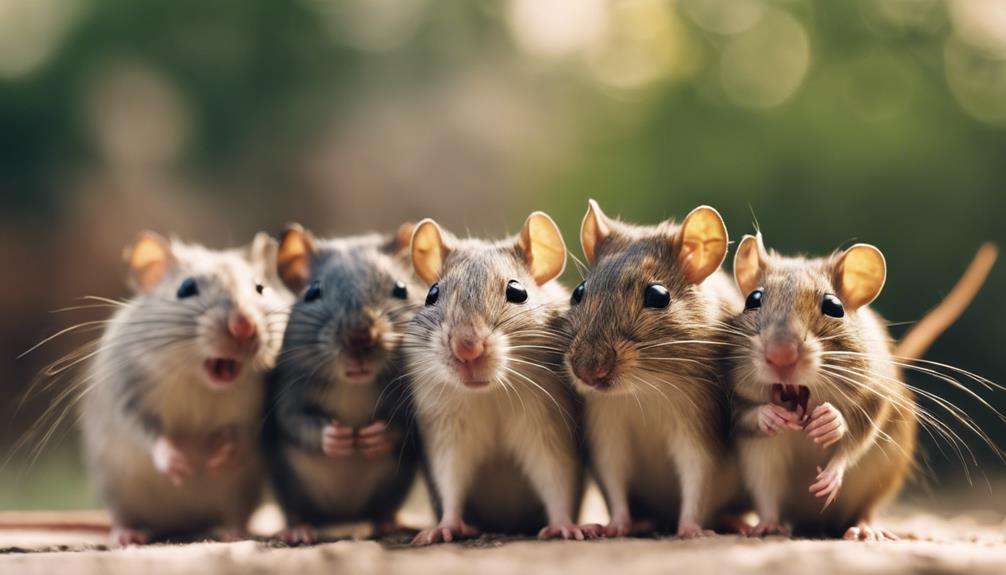
To gain a comprehensive understanding of quirky rodents' behavior and welfare in captivity, it's essential to explore the intricate social structures they form, particularly focusing on their hierarchical organization and social dynamics. Dominance hierarchy dynamics are prevalent among rodents, influencing various aspects such as social bonding, resource access, and breeding opportunities.
Within these social groups, individuals establish hierarchies through interactions that determine access to resources and mates. Social bonding and affiliative behaviors are crucial for maintaining group cohesion and reducing conflicts. Communication through vocalizations, body language, and scent marking plays a significant role in establishing and reinforcing social relationships.
Understanding the dynamics of quirky rodents' social structures is vital for effectively managing their behavior, welfare, and enrichment needs. By recognizing the importance of dominance hierarchies, social bonding, conflict resolution, and group cohesion in these animals, caretakers can create environments that support their natural social behaviors and overall well-being.
Quirky Rodents' Unconventional Sleeping Habits
Understanding the nuances of quirky rodents' unconventional sleeping habits is crucial for ensuring their well-being and proper care in captivity. Rodents display various sleep adaptations and behaviors that are essential to comprehend for their optimal management.
- Sleep adaptations, Circadian rhythms: Some rodents exhibit polyphasic sleep patterns, sleeping in short bouts throughout the day and night, while others, like hamsters, are nocturnal animals, being most active during the night.
- Nesting behaviors, Burrowing tendencies: Rodents often engage in nesting behaviors before resting, creating a safe and comfortable environment. Burrowing tendencies are common, with some species preferring to sleep underground.
- Resting postures, Dream states: Observing rodents' resting postures can provide insights into their comfort levels and overall well-being. While it's not definitively proven, some evidence suggests that rodents may experience dream states during certain sleep phases.
Understanding these aspects of quirky rodents' sleeping habits can aid in creating suitable captive environments that promote their natural behaviors and ensure their physiological needs are met.
Managing Quirky Rodents' Unique Dietary Needs
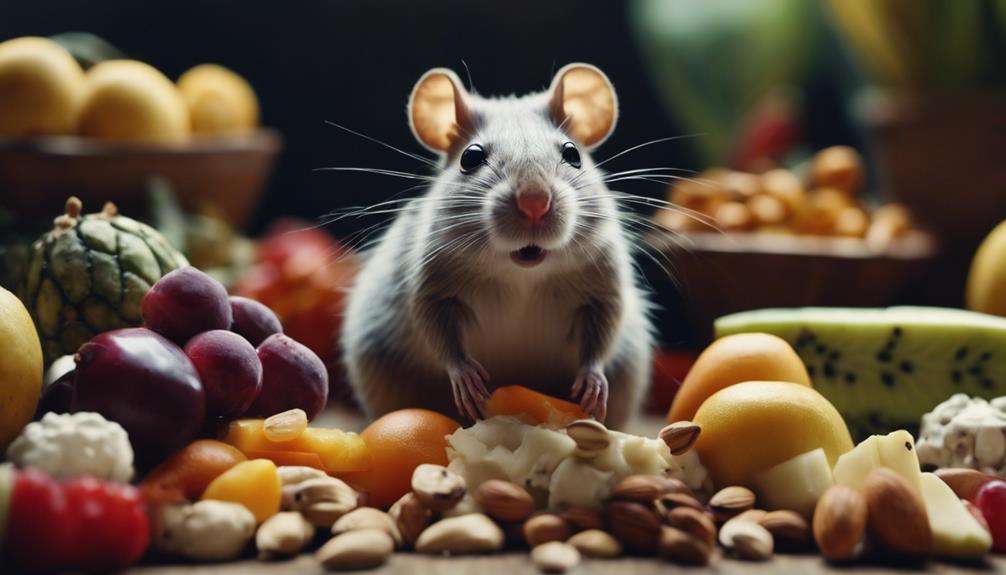
Quirky rodents with unique dietary needs must be carefully managed to ensure their health and well-being in captivity. Nutritional balance is crucial for these animals to thrive. Ensuring adequate fiber intake is essential for digestive health in rodents like degus, chinchillas, gerbils, hamsters, and sugar gliders. A diet rich in fiber and low in fat helps prevent obesity and other health issues in these creatures.
Dietary enrichment plays a vital role in keeping quirky rodents healthy. Chinchillas, for example, require hay-based diets to maintain proper dental care and aid digestion. Gerbils benefit from a varied diet consisting of seeds, grains, fruits, and vegetables, with occasional protein sources like insects. Hamsters thrive on a balanced diet that includes pellets, fresh produce, and occasional lean protein. Sugar gliders, on the other hand, need a diverse diet comprising fruits, vegetables, proteins, and nectar to meet their nutritional requirements and prevent health problems. By understanding and meeting the unique dietary needs of quirky rodents, you can promote their overall well-being in captivity.
Frequently Asked Questions
What Are the Unique Characteristics of Rodents?
When exploring the unique characteristics of rodents, you will discover their fascinating abilities in communication, socialization, and problem-solving. Rodents exhibit intricate forms of interaction, complex social structures, and impressive cognitive skills in navigating challenges.
What Are the Behaviors of Rodents?
Rodents utilize various communication strategies, including vocalizations and scent marking. They exhibit intricate nesting behaviors, constructing elaborate nests for shelter and protection. Foraging techniques involve scavenging for food using keen senses and memory to locate resources efficiently.
How Intelligent Are Rodents?
Rodents showcase remarkable intelligence through problem-solving skills, memory capabilities, and intricate social interactions. Their cognitive prowess challenges traditional views, aligning them with primates in learning and memory. Their complexity warrants further study.
Do Rodents Have Empathy?
Do rodents have empathy? Rodents, including rats, exhibit empathy in their social interactions. Studies on rodent emotions reveal empathy-driven behaviors like helping trapped cagemates. These findings offer insights into the emotional lives of rodents.
Conclusion
You have delved into the intricate world of quirky rodents and uncovered fascinating insights into their behavior.
By understanding their unique quirks, communication methods, problem-solving skills, and social structures, you have gained a deeper appreciation for these often misunderstood animals.
Remember, managing their well-being requires empathy, proper care, and environmental enrichment.
Keep exploring and learning about these fascinating creatures to ensure their health and happiness in captivity.
